

|


|
Tamiya Leopard 2 A6 Main Battle Tank - 56019
|
Released by Tamiya on June 8, 2004, the Leopard 2 A6 Main Battle Tank (#56019) is the Complete Full Option Kit version, with a battery, charger and 4-channel radio system included.
A front-mounted double gearbox, incorporating three gear type differentials, with two electric motors, operate together or individually to produce forward/reverse running and pivot turning. Metal torsion bars and suspension arms combine with the wide tracks to smoothly absorb bumps and dips in the terrain and provide high manoeuvrability. In addition, realistic engine sounds accompany the tank as it starts up, drives and stops to idle. The main gun can be elevated, depressed and swung to the left and right.
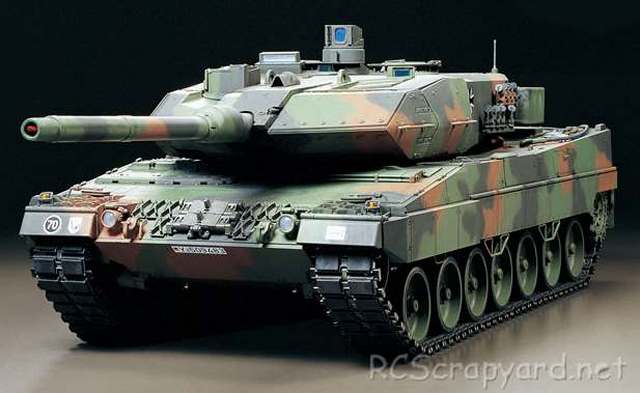
The Leopard 2A6 tank was produced between 2001 and 2005 and in that time was used by more than 10 European nations. The Leopard 2A5 featured replaceable wedge shaped armor on the turret, improved PERI-R 17 panoramic Commander's sight with thermal vision, spall liner on the turret interior for protection against splinters, all-electric gun control and stabilization system for easy maintenance and reduced noise, GPS navigation system, electro-pneumatic driver's hatch and a CCD camera mounted on the rear of tank for high-speed reversing. The Leopard 2A6 featured improved firepower including a 55 caliber 120mm smoothbore main gun.
This model comes with metal bushings, that after a short while, when dust and grit get into them, can actually wear into the metal drive shafts that spin in them - we recommend these should be replaced by a full set of steel shielded ball bearings ASAP.








|
|
|

|
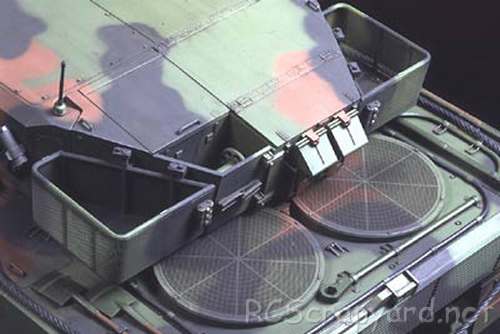
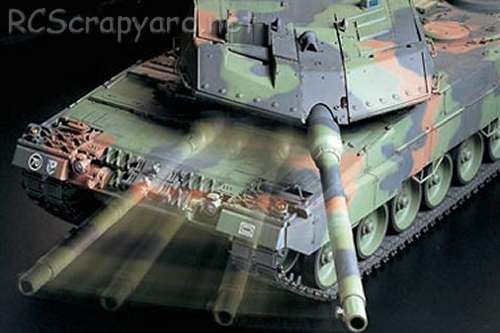
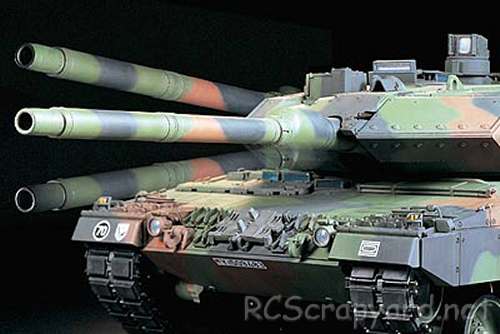
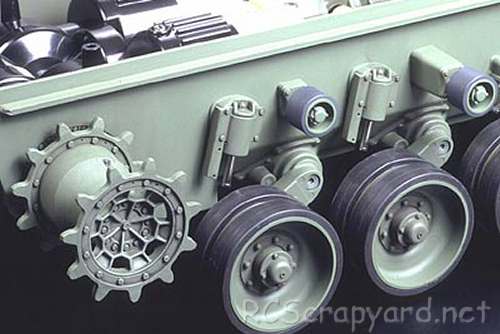
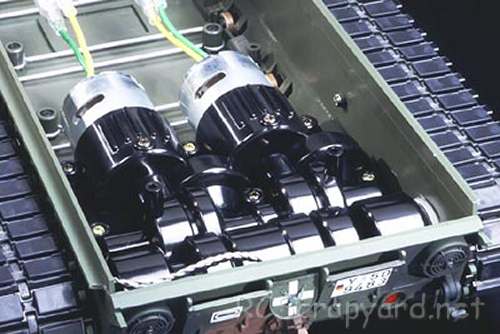
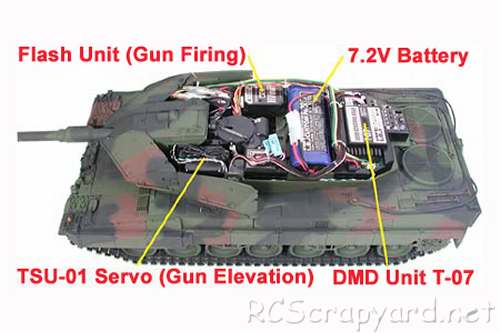
|
Hints, Tips and Information
How to avoid Radio Interference
1/ The first consideration when installing your Receiver into your Electrically Powered Model is to make sure it is well away from the Negative Battery terminal, and the Motor. The Magnetic field can cause stuttering type interference at times of high current draw (i.e., Fast Acceleration) |









|






|
|
|
|
Hints, Tips and Information
Servos for RC Models
Servos are found on all kinds of Radio Controlled Models. RC Touring Cars, Buggys, Trucks, Truggys, Monster Trucks, Rock Crawlers, Airplanes, Helicopters, Boats and Ships for Steering, Throttle Control, Rudder Operation and Wing Flaps. |
Information and AdviceElectronic Speed ControllersHistory
ESC were originally developed to be used in conjunction with brushed 27T stock and modified motors in the late 1970s, early 1980s. Compared to modern day Controllers, they were Bulky and heavy, constructed using basic resistors, rheostats, capacitors and transistors, crammed together on a simple circuit board, to provide stepped but smooth acceleration when compared to the old mechanical, servo operated sweeper Speed Controllers. An Electronic Switch to change the direction of current flow was used on some of these early ESC to give reverse operation. Although they were a vast improvement on the old mechanical speedos of the time, they were expensive, jerky to control, and prone to burn out if not carefully looked after. |
|
RC Models:
|
Radio & Motors: |
Other
Accessories: |